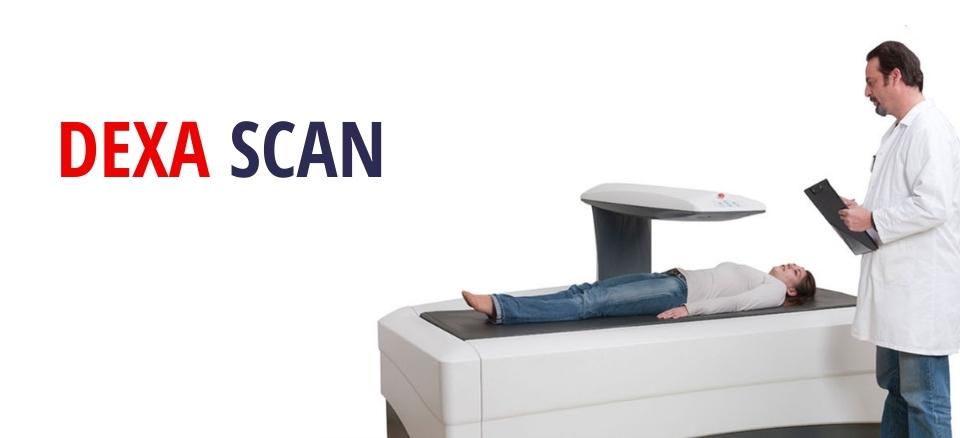Bone health is a cornerstone of overall wellness, yet it often goes overlooked until problems arise. Osteoporosis, fractures, and declining bone density can significantly impact quality of life, especially as we age. This is where Dexa scans (Dual-Energy X-ray Absorptiometry) come into play—a simple yet powerful diagnostic tool that measures bone density and offers early insights into potential risks. This article delves into how Dexa scans work, their benefits, and why they are essential for safeguarding your skeletal health.
Understanding Dexa Scans
What is a Dexa Scan?
A Dexa scan is a non-invasive imaging technique designed to measure bone mineral density (BMD). By using low-dose X-rays, it provides precise data about the strength and structure of your bones, helping healthcare professionals detect early signs of osteoporosis or other bone-related issues.
How Does It Work?
- Dual-Energy X-rays: Two low-level X-ray beams are directed at your bones.
- Measurement of Absorption: The scanner measures how much of the X-rays are absorbed by your bones.
- Result Interpretation: Based on these readings, a T-score or Z-score is calculated, indicating bone density levels relative to a healthy individual.
Who Should Consider a Dexa Scan?
- Individuals over 50, particularly postmenopausal women.
- People with a family history of osteoporosis or fractures.
- Those undergoing long-term steroid treatment.
- Individuals with a sedentary lifestyle or poor dietary habits.
Benefits of Dexa Scans
1. Early Detection of Osteoporosis
Osteoporosis develops silently, often without symptoms until a fracture occurs. Dexa scans enable early detection, allowing you to take preventive measures before significant bone loss happens.
2. Monitoring Bone Health Over Time
For those already diagnosed with bone-related conditions, Dexa scans serve as a reliable tool to monitor the effectiveness of treatments like calcium supplements, lifestyle changes, or medication.
3. Personalized Health Insights
With precise data, healthcare providers can tailor prevention or treatment plans to your unique needs, ensuring better outcomes.
4. Non-Invasive and Quick
Dexa scans are painless and take only about 10-20 minutes, making them a convenient option for routine check-ups.
What to Expect During a Dexa Scan
Preparing for the Scan
- Wear loose, comfortable clothing without metal zippers or buttons.
- Avoid calcium supplements 24 hours before the scan.
- Inform your technician if you’re pregnant or recently had other imaging tests using contrast dye.
During the Procedure
- You’ll lie flat on a padded table as the scanner moves over specific areas, usually the hip and spine.
- The process is entirely painless, with no discomfort or downtime afterward.
Understanding the Results
- T-Score: Compares your bone density with a healthy young adult.
- Z-Score: Compares your bone density with someone of your age, gender, and size.
Scores below -2.5 indicate osteoporosis, while scores between -1 and -2.5 suggest low bone mass.
Proactive Steps for Bone Health
1. Nutrition for Strong Bones
- Include calcium-rich foods like dairy products, leafy greens, and fortified cereals.
- Get sufficient vitamin D through sunlight or supplements.
2. Regular Exercise
- Weight-bearing and resistance exercises strengthen bones and improve balance, reducing fall risk.
3. Lifestyle Modifications
- Avoid smoking and excessive alcohol, both of which can weaken bones.
- Maintain a healthy weight to minimize stress on your skeletal structure.
4. Medication and Supplements
If diagnosed with low bone density, your doctor might recommend specific medications or supplements to improve bone health.
Conclusion
Bone health plays a pivotal role in maintaining mobility and independence as we age. Dexa scans offer a comprehensive and reliable way to assess and monitor your bone density, empowering you with the knowledge to make informed health decisions. By combining regular scans with proactive lifestyle changes, you can pave the way to a future of stronger bones and better overall well-being.
FAQs
1. Is a Dexa scan safe?
Yes, Dexa scans use a very low level of radiation, making them safe for most individuals. However, pregnant women should avoid the procedure unless absolutely necessary.
2. How often should I get a Dexa scan?
The frequency depends on your risk factors. Generally, individuals over 65 or those with known risk factors should get tested every 1-2 years.
3. Does a Dexa scan detect fractures?
While it doesn’t detect existing fractures, it can identify areas of weakened bone density that are more prone to fractures.
4. Is a referral required for a Dexa scan?
In most cases, a doctor’s referral is needed to undergo a Dexa scan.
5. What is the cost of a Dexa scan?
Costs vary based on location and healthcare coverage. Check with your provider to understand the pricing and insurance options.



